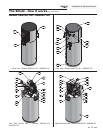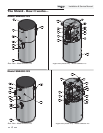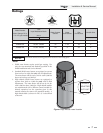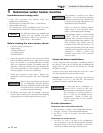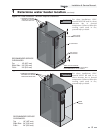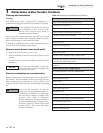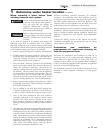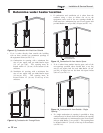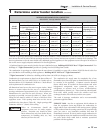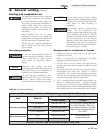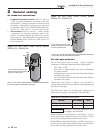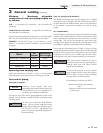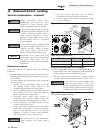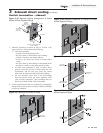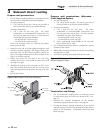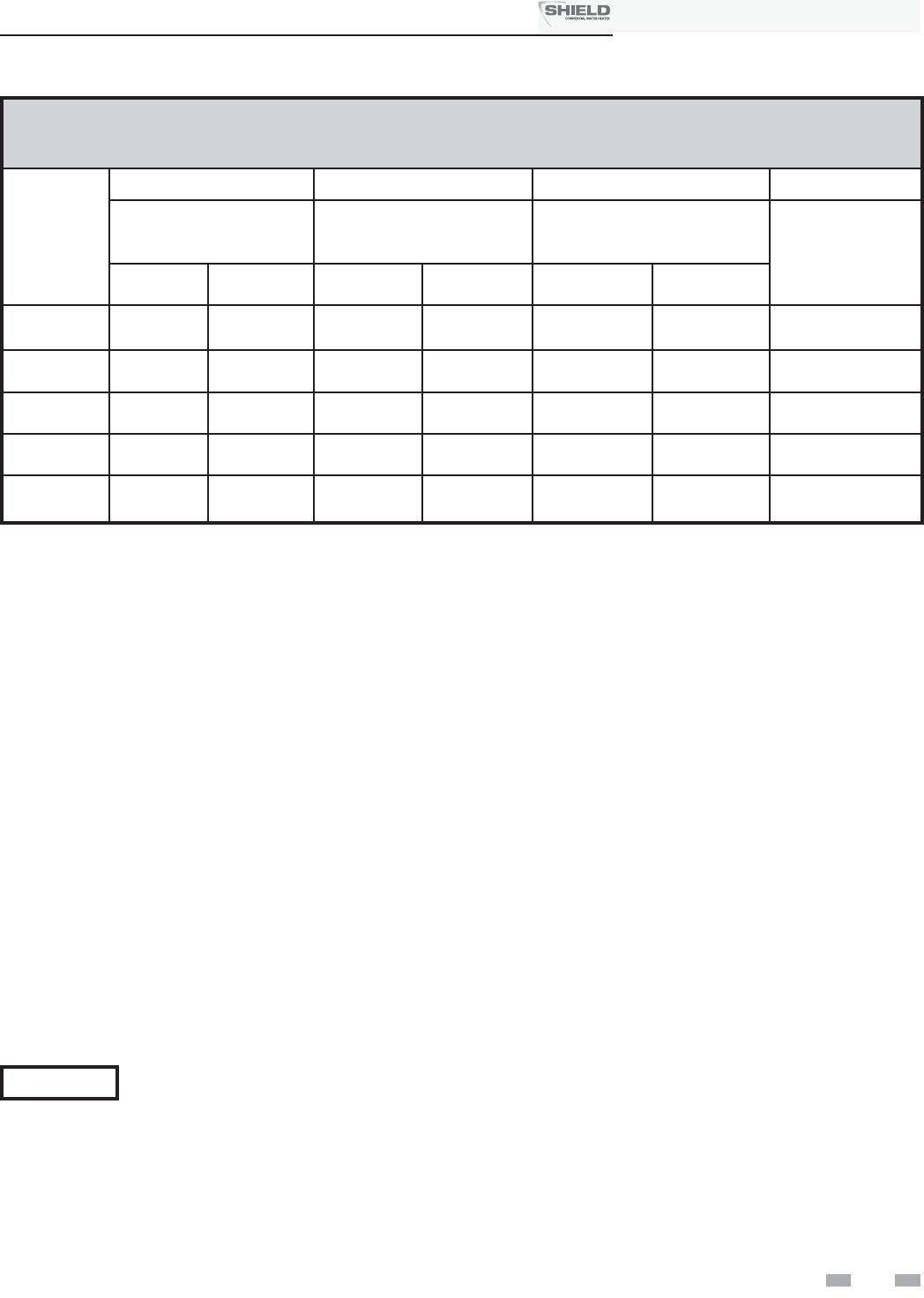
1 Determine water heater location (continued)
13
TABLE - 1B
MINIMUM RECOMMENDED COMBUSTION
AIR SUPPLY TO EQUIPMENT ROOM
Model
Number
FIG. 1-3 FIG. 1-4 FIG. 1-5 FIG. 1-6
*Outside Air from
2 Openings Directly from
Outdoors
*Outside Air from
2 Ducts Delivered from
Outdoors
**Inside Air from
2 Ducts Delivered from Interior
Space
*Outside Air from
1 Opening Directly
from Outdoors, in
2
To p
Opening, in
2
Bottom
Opening, in
2
To p
Opening, in
2
Bottom
Opening, in
2
To p
Opening, in
2
Bottom
Opening, in
2
SNR150-100
38
(246 cm
2
)
38
(246 cm
2
)
75
(484 cm
2
)
75
(484 cm
2
)
150
(968 cm
2
)
150
(968 cm
2
)
50
(323 cm
2
)
SNR200-100
50
(323 cm
2
)
50
(323 cm
2
)
100
(646 cm
2
)
100
(646 cm
2
)
200
(1,291 cm
2
)
200
(1,291 cm
2
)
67
(433 cm
2
)
SNA285-125
72
(465 cm
2
)
72
(465 cm
2
)
143
(923 cm
2
)
143
(923 cm
2
)
285
(1,839 cm
2
)
285
(1,839 cm
2
)
95
(613 cm
2
)
SNA400-125
100
(646 cm
2
)
100
(646 cm
2
)
200
(1,291 cm
2
)
200
(1,291 cm
2
)
400
(2,581 cm
2
)
400
(2,581 cm
2
)
134
(865 cm
2
)
SNA500-125
125
(807 cm
2
)
125
(807 cm
2
)
250
(1,613 cm
2
)
250
(1,613 cm
2
)
500
(3,226 cm
2
)
500
(3,226 cm
2
)
167
(1,078 cm
2
)
*Outside air openings shall directly communicate with the outdoors. When combustion air is drawn from the outside through a
duct, the net free area of each of the two openings must have twice (2 times) the free area required for Outside Air/2 Openings. The
above requirements are for the water heater only; additional gas fired appliances in the equipment room will require an increase in
the net free area to supply adequate combustion air for all appliances.
**Combined interior space must be 50 cubic feet per 1,000 Btu/hr input. Buildings MUST NOT be of *“Tight Construction”. For
buildings of *“Tight Construction”, provide air openings into the building from outside.
*No combustion air openings are needed when the water heater is installed in a space with a volume NO LESS than 50 cubic feet
per 1,000 Btu/hr of all installed gas fired appliances. Buildings MUST NOT be of *“Tight Construction”.
*”Tight Construction” is defined as a building with less than 0.40 ACH (air changes per hour).
The result is improper combustion and a non-warrantable,
premature appliance failure.
EXHAUST FANS: Any fan or equipment which exhausts air
from the equipment room may deplete the combustion air
supply and/or cause a downdraft in the venting system. Spillage
of flue products from the venting system into an occupied living
space can cause a very hazardous condition that must be
immediately corrected. If a fan is used to supply combustion air
to the equipment room, the installer must make sure that it does
not cause drafts which could lead to nuisance operational
problems with the appliance.
Combustion air requirements are based on the latest edition of
the National Fuel Gas Code, ANSI Z223.1; in Canada refer to
the latest edition of CGA Standard CAN B149.1. Check all local
code requirements for combustion air.
All dimensions based on net free area in square inches. Metal
louvers or screens reduce the free area of a combustion air
opening a minimum of approximately 25%. Check with louver
manufacturers for exact net free area of louvers. Where two
openings are provided, one must be within 12" (30cm) of the
ceiling and one must be within 12" (30cm) of the floor of the
equipment room. Each opening must have net free area as
specified in the chart above (Table 1B). Single openings shall
commence within 12" (30cm) of the ceiling.
ƽ CAUTION
Under no circumstances should the
equipment room ever be under negative
pressure. Particular care should be taken
where exhaust fans, attic fans, clothes dryers,
compressors, air handling units, etc., may
take away air from the unit.
The combustion air supply must be completely free of any
flammable vapors that may ignite or chemical fumes which may
be corrosive to the appliance. Common corrosive chemical
fumes which must be avoided are fluorocarbons and other
halogenated compounds, most commonly present as
refrigerants or solvents, such as Freon, trichlorethylene,
perchlorethylene, chlorine, etc. These chemicals, when burned,
form acids which quickly attack the stainless steel heat
exchanger, headers, flue collectors, and the vent system.
Installation & Service Manual
TM



